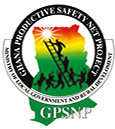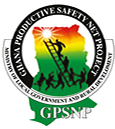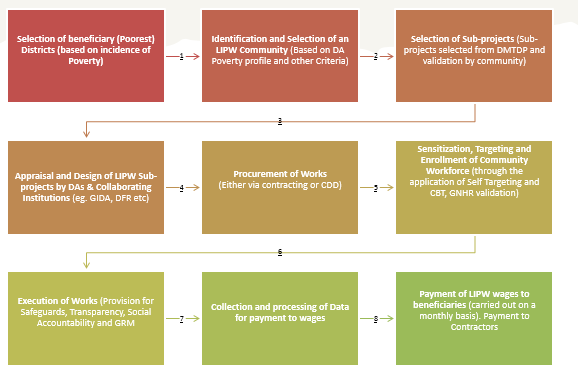Project Components
- Type of Account Heading: Componet
- Account details heading: Labour Intensive Public Works
- Product type description 1:
Payments to beneficiaries through labour intensive public work programs e.g (rehabilitating/maintaining productive community/public assets) Environment and Social Safeguards


- Product Details 1:
Initiated in 2011, the Labor-Intensive Public Works (LIPW) offers temporary wage-earning opportunities during the agricultural off-season to poor households. This activity supports the creation, rehabilitation, and maintenance of public or community assets. The LIPW wage rate is set at the national minimum wage. Each beneficiary household representative works for a maximum of 90 person-days per year during the agricultural off-season. To deepen impacts, households work on LIPW sites for up to two consecutive dry seasons over a two-year period.
LIPW beneficiaries rehabilitate and maintain rural feeder and access roads to connect their remote communities to larger, commercial/urban centers, to boost access to markets and improve labor productivity. They also rehabilitate small earth dams and dugouts, which are significant to improving access to irrigation and agricultural productivity in the especially the Savannah belt of the country, where underground water sources are insufficient to provide for domestic and livestock needs during the dry season. Investing in such structures are increasingly important as droughts become more frequent and intense as a result of climate change. Beneficiaries also engage in climate change mitigation interventions: seedling production, cultivation of fruit trees and cash crops such as cashew, and woodlots, on degraded communal and public land to mitigate climate change and support catchment and watershed protection and biodiversity conservation.
Component Objective
The project is expected to directly benefit the poorest households in Ghana over a four-year period by providing 30,000 short-term employment through LIPW program
- To extend income-earning opportunities to poor households through LIPW, which maintain needed community assets to improve productivity and respond to effects of climate change
Coverage & Scope
- 80 poorest districts across the country (selection based on GLSS 6 poverty incidence)
- Initial fund allocation of USD28M and now USD21M after restructuring due to COVID-19
- Funds used to pay beneficiary wages, materials and tools, payment to contractors, capacity building activities, monitoring and supervision, etc.
- USD13.23M (63%) of revised component allocation to be paid as wages to beneficiaries
- 60% of LIPW funds shared equally among the 80DAs and remaining 40% proportionately across all DAs based on incidence of poverty
Structure for Implementation
- MLGRD providing overall policy and implementation direction through the RDCU and its ZCOs
- RCCs providing oversight of District Assemblies
- Mainstreamed through the District Assemblies
- 5-Member Facility Management Committee (FMC) responsible for day-to-day management of the sites and eventual maintenance of the assets. FMC represented on daily basis by the Community Facilitator
- Product type name 2: LIPW Delivery Process
- Product type description 2:
Selection of LIPW Communities is based on:
- poverty (district poverty profile)
- community felt need
- proposed subproject lending itself to use of LI Methods of construction,
- availability of productive labour, etc.
- Priority given to LEAP communities
- Product Details 2:
- Product type name 3: Subprojects Selection and Preparation
- Product Details 3:
- Activity undertaken by DAs with support from ZCOs/RDCU and collaborating institutions using designed guidelines for selection of subprojects
- Menu includes Small Earth Dams/dugouts (SEEDs), Feeder Roads (FRs) and Climate Change Mitigation Interventions (CCMIs), others
- Over 1,000 subprojects proposed by DAs from their Medium-Term Development Plans
- Appraisals, detailed surveys, designs and cost estimation for 358 [67(256.4Km) F/Rs, 78 SEEDs and 213 (2082ha)CCMIs] subprojects completed so far
- Product type name 1: Labour Intensive Public Works
| Componet | Labour Intensive Public Works |
|---|---|
Labour Intensive Public WorksPayments to beneficiaries through labour intensive public work programs e.g (rehabilitating/maintaining productive community/public assets) Environment and Social Safeguards
|
Initiated in 2011, the Labor-Intensive Public Works (LIPW) offers temporary wage-earning opportunities during the agricultural off-season to poor households. This activity supports the creation, rehabilitation, and maintenance of public or community assets. The LIPW wage rate is set at the national minimum wage. Each beneficiary household representative works for a maximum of 90 person-days per year during the agricultural off-season. To deepen impacts, households work on LIPW sites for up to two consecutive dry seasons over a two-year period. LIPW beneficiaries rehabilitate and maintain rural feeder and access roads to connect their remote communities to larger, commercial/urban centers, to boost access to markets and improve labor productivity. They also rehabilitate small earth dams and dugouts, which are significant to improving access to irrigation and agricultural productivity in the especially the Savannah belt of the country, where underground water sources are insufficient to provide for domestic and livestock needs during the dry season. Investing in such structures are increasingly important as droughts become more frequent and intense as a result of climate change. Beneficiaries also engage in climate change mitigation interventions: seedling production, cultivation of fruit trees and cash crops such as cashew, and woodlots, on degraded communal and public land to mitigate climate change and support catchment and watershed protection and biodiversity conservation. Component Objective The project is expected to directly benefit the poorest households in Ghana over a four-year period by providing 30,000 short-term employment through LIPW program
Coverage & Scope
Structure for Implementation
|
LIPW Delivery ProcessSelection of LIPW Communities is based on:
|
|
Subprojects Selection and Preparation |
|



